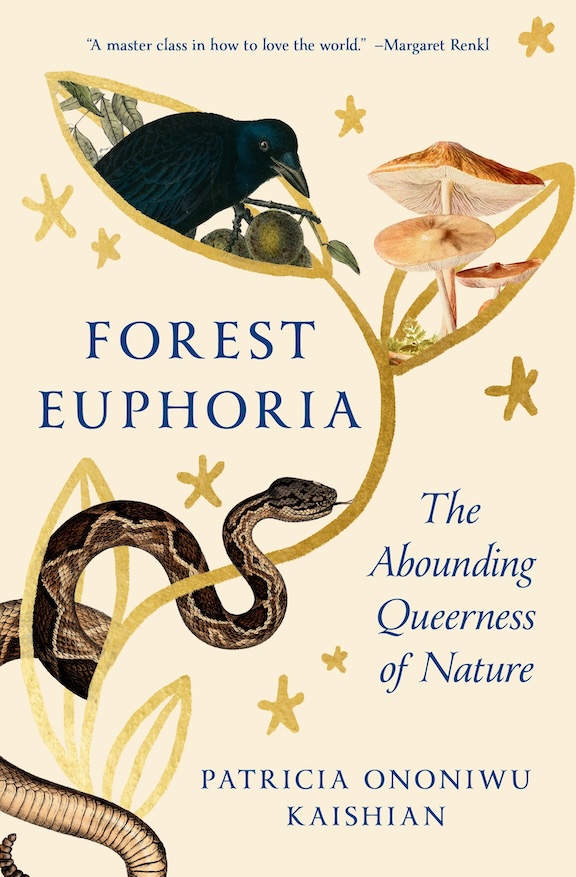
“Forest Euphoria: The Abounding Queerness of Nature”
By Patricia Ononiwu Kaishian
Spiegel & Grau, 2025
272 pages, hardcover, $30
Like any scientist, mycologist Patricia Ononiwu Kaishian is no stranger to closely examining the world around her. From the Laboulbeniales — multicellular fungi that live on the surface of beetles — that she has made a career of studying, to the copperheads whose company she sought out as a child, Kaishian applies a unique lens of inquiry to the natural world and, in doing so, interrogates the human relationship to our environments and each other.
In her new book, “Forest Euphoria,” Kaishian cites Robin Wall Kimmerer as an early influence in her budding trajectory as a scientist, and the botanist’s impact is clear in some of the book’s essays. Such is the case in “Purple Love,” when Kaishian speaks to the coexistence of aster and goldenrod in the landscape as fulfilling a function of beauty — an observation that helped to spark Kimmerer’s own scientific career. Kaishian’s words feel like they are in conversation with her mentor’s, adding layers of contemplation and insight through her perspective as a queer, neurodivergent person with Armenian and Irish ancestors. She explores her identity on the page, adding references to more deeply understand the world as she sees it. And what a beautiful way she has of looking.
Kaishian understands that “nature” is not a space that is distinct from humans and instead embraces the innate kinship in nature that feels vital to not only her health but to the wellbeing of all of humanity. From a young age, growing up in New York’s Hudson River Valley, Kaishian has found refuge in “interspecies dens.” She would sit by herself in a culvert under her driveway, though she was never truly alone as she was surrounded by snakes and frogs, snapping turtles and Jesus bugs. This act of witness became a form of communion that Kaishian has maintained into adulthood. Whether revisiting a rookery of crows near her college campus or returning to an ephemeral body of water near the university where she later taught, Kaishian has developed a practice of having a “sit spot.”
Watching the world around her, week after week, throughout the unfolding seasons, lends an almost familial intimacy with a place. As the book’s subtitle, “The Abounding Queerness of Nature,” suggests, Kaishian redefines the status quo of relationship to both place and non-human species, going beyond a discussion of gender and sexual orientation often called to mind with “queerness,” and challenging the very meaning of what it is to be human. “I like blurring the line between human and nature because I believe we, as a species, have become profoundly lonely in our self-enforced isolation,” she writes. “And it’s because of this that the planet is spinning through a devastating loss in biodiversity.” Kaishian’s essays introduce readers to other species — eels, mushrooms, crows — and the lessons that she learns through exploring her connection to these beings with reverence, wonder, and awe. The result is a book that reads like an allegory for and an antidote to humanity’s disconnect with the world around us.
– Holli Cederholm
This review was originally published in the summer 2025 issue of The Maine Organic Farmer & Gardener. Browse the archives for free content on organic agriculture and sustainable living practices.